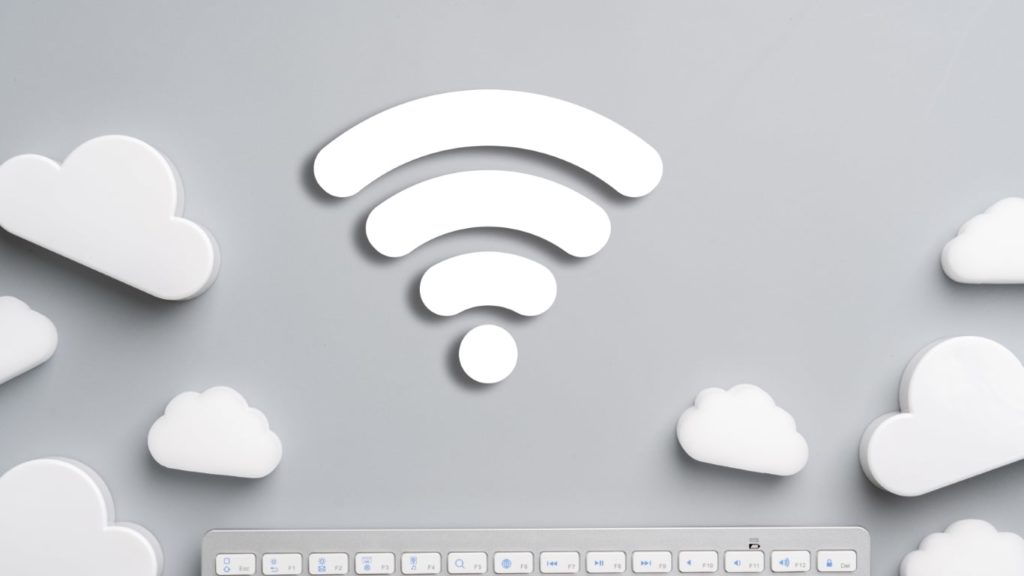
In the world we live in today, Wi-Fi is everywhere. Almost everyone uses Wi-Fi at some point in their day. With it, you can turn your smartphone into a remote control, send documents to your printer from any smartphone or computer; send notifications from your smartphone to your PC, and stream movies to any TV in your house. You can use it to share files with a nearby computer, book flights, order a pizza, and so on.
Since its creation, Wi-Fi has played a huge role in keeping us connected at home and in public. Today it is widespread, and we now rely on it to maintain our productivity and coordinate things at work. We use it to monitor our health, and even for protection. But do you know the full history behind Wi-Fi technology? How does it work? Who invented Wi-Fi?
So, What is Wi-Fi?
Wi-Fi is a wireless networking technology that enables computers, mobile phones, game consoles, and many other devices to communicate over a wireless signal. It is just like a high-frequency radio signal. The 802.11 standards set by the Institute of Electrical and Electronics Engineers and the Wi-Fi Alliance are the standards for Wi-Fi.
Your device, router, and other electronic components that make up a wireless network are based on these standards. This technology can be used for different purposes such as data transmission and wireless communication. Also, it allows a wireless connection for up to 20 meters.
How does Wi-Fi work?
Wi-Fi is sometimes referred to as a ‘Wireless Local Area Network’ or WLAN. It allows different users to connect their electronic devices to a given internet router at the same time and access the internet without any disturbance. It relies on the transmission and reception of radio waves. The technology involves getting broadband internet to a device using wireless transmitters and radio signals.
Similar to the way radio can tune into a radio station signal over the airwaves, a device can pick up a signal that connects it to the internet through the air. A computer’s wireless adapter changes data received into a radio signal and transmits it using an antenna. This can be received and read by Wi-Fi-enabled devices. Information is then traded between the transmitter and the device.
Who invented Wi-Fi?
There were no smartphones, tablets, laptops, or other wireless devices decades ago. You had to rely on fixed wires to browse the internet. Major communications companies around the world were experimenting and trying to introduce wireless networking technology, but there was a challenge: Reverberation.
Reverberation occurs when radio waves bounce around the surrounding environment, causing echoes that distort the signal. This led to the creation of IEEE802.11 by the IEEE committee. Without getting into too many details, it is a set of standards that define communication for WLANs. From then on, routers were developed to comply with those standards.
You can see how difficult it is to name a single inventor, considering there are several components that make up Wi-Fi technology. The narrative of Wi-Fi goes back much farther than you think. Nikola Tesla once predicted people would one day be able to communicate with each other wirelessly in an instant with small devices.
Hedy Lamarr

The first major contribution to the invention of Wi-Fi was by the inventor Hedy Lamarr. Hollywood actress Hedy Lamarr was a major contributor to advances in communication technology in the 1940s that led to today’s GPS, Wi-Fi, and Bluetooth. Her brilliant idea was called frequency hopping. It’s a way of jumping around radio frequencies to avoid a third party jamming your signal.
She invented it for the Navy to use as a secret wartime communication system. This could be used to guide torpedoes without being detected. Years later, her idea became known as spread-spectrum technology because it spreads a radio signal out over a wide range of frequencies.
In 1971, the University of Hawaii completed the first wireless packet data transfer (ALOHANET). Using a technology called Ultra High Frequency (UHF), they were able to successfully connect seven computers spread across four islands without the use of satellites or connected cables.
1985 was an important year as the Federal Communications Commission opened three bands for unlicensed use. Prompted by engineer Micheal Marcus, the Federal Communications Commission opened up these ‘garbage bands’ for communications entrepreneurs.
The bands at 900Mhz, 2.4GHz, and 5.8GHz were available for communication purposes but with the use of spread spectrum technology. It made the signal difficult to intercept and less susceptible to disturbances. This ruling created the avenue for the development of technologies that became the precursor to the Wi-Fi we know today.
In 1997, Vic Hayes (Father of Wi-Fi) was the head of the IEEE committee that introduced the concept of an international standard for wireless networking (IEEE 802.11 standard. The standard paved the way for the possibility of Wi-Fi.
Dr. John O’ Sullivan


Dr. John O’ Sullivan, an Australian engineer, led the team of inventors (Dr. Terence Percival, Mr. Diethelm Ostry, Mr. Graham Daniels, and Mr. John Deane) who developed Wi-Fi technology. While working for the Commonwealth Scientific and Industrial Research Organisation (CSIRO) of Australia. They were tasked with finding a way for computers to communicate without the use of wires. The invention of Wi-Fi came out of research involving radio astronomy and complex mathematics. The team used their experience to interpret and manage the behavior of radio waves in different environments.
They overcame the problem of reverberation by building a fast chip that could transmit a signal and also reduce the echo. Their work was groundbreaking because it was versatile, practical, and simple – the wireless LAN.
By 1999, Wi-Fi was introduced for home use, and it was helped by the increasing popularity of high-speed broadband internet connections. As the popularity grew, access points (hotspots) began to spring up in public places such as coffee shops and libraries, giving convenient internet access to everything from laptops to smartphones.
Today, thanks to this wireless network connectivity, we no longer need umbilical-like cables and multiple wires to stay connected. Its myriad applications have changed the way we think and how we go by in our daily lives, Wi-Fi potential is endless, and we should be excited about what the future holds.
Who owns the patent for Wi-Fi?
Even though Wi-Fi was invented primarily by the people mentioned above, nobody owns the patent for Wi-Fi technology as a whole. Because it was developed, improved, and maintained as a collective effort of several individuals and companies.
However, companies such as Qualcomm, Intel, Broadcom, and others have obtained patents for their specific innovations and implementations within the Wi-Fi standard. Some of these patents are given below –
- Qualcomm – Qualcomm holds numerous patents related to Wi-Fi, such as techniques for improving data throughput, interference mitigation, power management, and advanced antenna technologies.
- Intel – Intel has patents for technologies related to Wi-Fi communication, network optimization, security protocols, and coexistence techniques.
- Broadcom – Broadcom holds patents related to Wi-Fi advancements, including technologies like multiple-input and multiple-output (MIMO), interference mitigation, channel estimation, and wireless chip design.